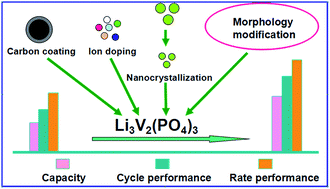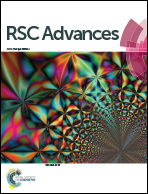Effects of morphology on the electrochemical performances of Li3V2(PO4)3 cathode material for lithium ion batteries
Abstract
Lithium ion batteries (LIBs) are considered as one of the most successful energy storage systems for a wide range of modern applications. Cathode materials, as one of the most important components of LIBs, play a critical role in determining the performances of LIBs. Monoclinic Li3V2(PO4)3 (LVP) is one of the cathode materials with most potential for LIBs because of its high theoretical capacity, high operating voltage and safety performance. However, the intrinsically low electronic and ionic conductivity of LVP limits its development in large-scale application. Various methods such as carbon coating, cation doping and reducing the particle size have usually been used to improve the electrochemical performances of LVP. Besides, the design and optimization of LVP morphology are also effective approaches to improve the electrochemical performances of LVP. In this review, we discuss the development of morphology modifications such as porous structure, spherical structure, core–shell structure, rod-like structure, plate-like structure, nanofiber structure and flower-like structure in recent years and study the effects of various morphologies on the electrochemical performances of LVP.


 Please wait while we load your content...
Please wait while we load your content...